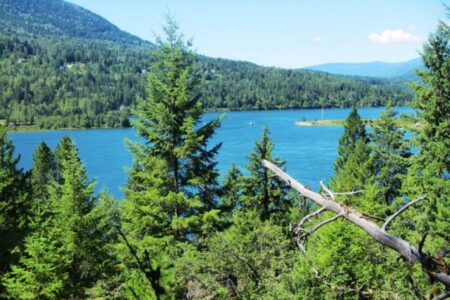Opinion: After COVID-19, what sort of world will we aim for?
Readers will already have read some articles about what our society needs to do to build a better world post-COVID-19. Analyzing our world as it is now rapidly reveals an urgent need for major change on many fronts. Many of us seem to share a hope that the pandemic will provoke serious, multi-faceted assessment of our current social and economic structures and expectations, and how they are setting us up for massive failure, and what we must do to improve our chances.
In no particular order, here’s a quick summary of some of the obvious issues:
Economic and social inequality get in the way of a healthy society and a healthy economy. One not-for-profit – 350.org – working with other not-for-profit organizations to curb the climate crisis and build a “just recovery” from the pandemic, has proposals to address the inequality issues. One of those proposals is: “ensure that all policies and programs address the social, economic and environmental determinants of health and are responsive to the climate emergency, which is, in itself, a health crisis. Learn from the pandemic: develop policies and make investments that keep communities and workplaces, particularly those on the frontlines, safe.”
On housing, Michael Mendelson says that Canada has “too little affordable, good-quality rental housing.” Mendelson is Senior Scholar at the Caledon Institute of Social Policy. Prior to his appointment to Caledon he was Deputy Secretary (Deputy Minister) of Cabinet Office in Ontario, and previous appointments included serving as Assistant Deputy Minister in Ontario’s Ministries of Finance, Community Services and Health, and In Manitoba as Secretary to Treasury Board and Deputy Minister of Social Services.
Noisy oceans harm marine life. For the sake of all marine life – and our own lives – we need to cut marine noise pollution. Noisy tankers, military sonar and marine bombing exercises, and marine oil exploration are the main offenders.
Insect populations are dropping dramatically, and while some people welcome having clearer windshields, we won’t be so happy when the widespread death of pollinators leads to scarcer and more expensive food. The main culprits in the loss of so many insects from our web of life are pesticides, especially neonicitinoid insecticides, climate change, and loss of habitat to encroaching human uses.
Deforestation – especially the loss of old-growth forest – has many destructive effects on our landscape and on the many lives that depend on old-growth habitat. The extirpation (local extinction) of species such as the southern mountain caribou in BC is just one of the more obvious local tragic effects of over-harvesting our forests. Deforestation also causes soil loss from erosion, loss of moisture in the remaining soil, and diminished rainfall – exacerbating droughts and wildfires. Deforestation is defined as the permanent removal of forest, but the clear-cutting of forests, burning of slash, and attempts to re-plant trees for later harvest also have damaging effects – and contribute to climate change.
Plastics pollution is described by National Geographic as “one of the most pressing environmental issues.”
Increasingly, people are mentioning a topic that is generally taboo: human overpopulation — the very large and rapidly increasing number of people living on Planet Earth, extracting renewable resources at an unsustainable rate, using energy at an arguably unsustainable rate, creating more demand for non-renewable resources, and driving climate change. This is a contentious topic, with some people arguing that with technological advances, or changes in consumption, the world can feed and shelter and clothe and provide energy for many more billions of humans, especially if we are willing to continue condemning huge numbers of people to live in abject poverty in slums – they use so few resources, after all — while a relatively tiny number of people hold most of the world’s wealth; others argue that our demands on the earth’s biosphere and resources are unsustainable, and that we are driving too many of the world’s species into extinction, which will ultimately cause a collapse of so much of earth’s life that it will irrevocably harm all of humanity.
The climate crisis is – according to the world’s most experienced and reputable climate scientists — one of the largest threats to all of life on earth, and the overwhelming scientific consensus is that we humans are causing it by burning fossil fuels for energy and transportation of people and goods around the planet, and by our large-scale mono-crop agricultural methods, and deforestation. A “Green New Deal” has been plotted in Canada, the USA and other countries to curb climate change, hopefully enough to prevent catastrophic global heating, and to create an economic plan that will create jobs to replace those that currently depend on unsustainable industries such as coal and oil extraction and transport. But no such Green New Deal has been embraced here, nor has any other effective means of curbing climate change.
Canada, for one, continues to heavily subsidize the fossil fuel industry, despite election promises by our current Prime Minister to stop those subsidies. Far from curbing climate change, we’re paying quite a lot of taxpayers’ money to accelerate it.
The “Scientists Second Warning to Humanity” published in 2017 contains dire warnings about all of the issues raised here. (Their first warning was issued in 1992. No one paid much attention then either.)
Our economic system is based on relentless, unending growth, and that’s a problem that was addressed comprehensively in the 1972 book “Limits to Growth.” The book laid out a series of scenarios, based on different outcomes of five variables: world population, industrialisation, pollution, food production and resource depletion. The original 1972 book produced 12 possible “futures” from 1972 to 2100; in a “30-year update” published in 2004, the possible futures presented had diminished to nine. The book – contrary to many criticisms – did not make “predictions.” It simply presented a series of possibilities, based on the information available at the time. Some people triumphantly claim that the authors missed the mark – others point out that they didn’t miss it by much.
Can we shape a better world?
Good question. Probably not, if we allow our governments to get away with relaxing or removing the very regulations designed to protect human and environmental health, using the pandemic as a rather feeble excuse or distraction – and make no mistake, some of them are doing just that, and not only those to the south of our southern border.
These are serious matters for citizens to contemplate – and serious tasks for our sort-of democracy to take on. Some people would far rather ignore it and amuse themselves by travelling, shopping, going to the ballet or the symphony, reading escapist literature, and other first-world distractions from the accumulating effects of our lifestyles. Effects such as COVID-19 and the on-going and accelerating climate crisis.
So why publish discussions like this one?
It’s a way of expressing hope. Hope that more people will care enough to take effective action and pressure our government hard enough to make the painful but necessary changes. Hope that more people will vote for parties and politicians serious about keeping more of the biosphere alive, instead of piling more wealth into the wallets of the already-obscenely-wealthy. Hope that more first-world people will try harder to shrink their own personal gigantic ecological footprints. Consume less. Buy less. Travel less. Take fewer things for granted. Appreciate the mind-blowing, amazingly beautiful and diverse natural world more, near your own home. Look at the stars more, and feel a little bit humble.
























